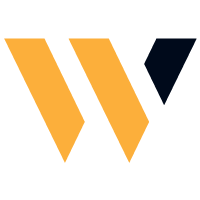Introduction to On-Page SEO
On-page SEO, a crucial aspect of search engine optimization, involves optimizing individual web pages to improve their search engine rankings and drive relevant traffic. Unlike off-page SEO, which focuses on external factors such as backlinks and social media presence, on-page SEO concentrates on elements within the website that can be controlled and modified. This includes factors like content quality, keyword usage, HTML tags, and overall site structure, all aimed at enhancing user experience and search engine visibility.
The significance of on-page SEO in today’s digital landscape cannot be overstated. With search engines continually refining their algorithms, understanding how on-page factors influence rankings is paramount. High-quality content that effectively addresses user queries is essential; it not only keeps visitors engaged but also encourages them to stay on the site longer, reducing bounce rates. Search engines are designed to deliver the most relevant results, making on-page optimization vital for businesses seeking visibility online.
On-page SEO encompasses various techniques, including keyword research, where relevant keywords are identified and strategically incorporated into the content. Appropriate use of title tags, meta descriptions, and header tags plays a pivotal role in informing search engines about the page’s subject matter. Furthermore, optimizing images, ensuring mobile-friendliness, and enhancing page loading speeds are critical elements that can significantly affect user satisfaction and search engine rankings.
While on-page SEO is just one component of a comprehensive SEO strategy, its impact is profound. Understanding the differences between on-page and off-page SEO allows marketers and website owners to implement targeted strategies effectively. By mastering on-page techniques, businesses can create a solid foundation that not only attracts search engine attention but also satisfies the needs of their target audience, ultimately contributing to their overall online success.
Understanding Keywords and Their Importance
Keywords play a pivotal role in the realm of on-page SEO as they serve as the foundation upon which content is built. By effectively utilizing keywords, content creators can align their work with user intent, thus improving the chances of attracting targeted organic traffic. Conducting comprehensive keyword research is the first step in this process, allowing writers to identify the terms and phrases that potential visitors are entering into search engines. Various tools, such as Google Keyword Planner, Ahrefs, and SEMrush, provide valuable insights into search volume, competition, and relevance, which can guide writers in selecting the most appropriate keywords for their content.
When it comes to keyword types, there are generally two categories to consider: short-tail and long-tail keywords. Short-tail keywords are typically broader and consist of one or two words, such as “shoes” or “digital marketing.” While they may attract high search volumes, they often face steep competition. Conversely, long-tail keywords are more specific phrases, typically consisting of three or more words, like “best running shoes for flat feet” or “digital marketing strategies for small businesses.” These keywords tend to have lower competition and more targeted traffic, resulting in higher conversion rates. Therefore, a balanced strategy that incorporates both types of keywords can optimize content performance.
Moreover, selecting the right keywords should be guided by factors such as relevance, search volume, and competition. Targeting keywords that truly reflect the content’s focus ensures that the material not only resonates with the intended audience but also satisfies search engine algorithms. Strategic placement of keywords throughout the content, including in headings, subheadings, and meta descriptions, further enhances the SEO effectiveness of the content. By understanding and leveraging keywords wisely, content creators can significantly improve their on-page SEO, driving better visibility and engagement in search results.
Crafting Compelling Title Tags and Meta Descriptions
Title tags and meta descriptions play a crucial role in on-page SEO, serving as the first impression of a webpage to both search engines and users. An effective title tag not only improves search visibility but also attracts potential visitors by clearly indicating the content of the page. According to best practices, a title tag should ideally be between 50 and 60 characters long, utilizing relevant keywords without exceeding the character limit. This ensures that the title is fully visible on search engine results pages (SERPs), which can significantly impact click-through rates.
When crafting title tags, it is beneficial to place the primary keyword at the beginning, as this can influence the ranking of the page. Moreover, it is advisable to maintain a unique title for each page, helping both search engines and users to differentiate between content. Using action words and numbers in the title can also enhance engagement, making it more appealing to the target audience.
Equally important are meta descriptions, which provide a brief summary of the webpage, usually ranging from 150 to 160 characters. A well-structured meta description should convey the main idea of the content succinctly while incorporating relevant keywords seamlessly. This not only aids in improving search visibility but also can provoke curiosity and encourage users to click on the link. Phrasing the meta description in a way that addresses the user’s query or need can further enhance the likelihood of gaining user interaction.
Incorporating both title tags and meta descriptions with strategic keyword usage and compelling language requires thoughtful consideration. By following these best practices, content creators can effectively improve their page’s searchability and user engagement, which are critical components of successful on-page SEO.
Optimizing Header Tags for Better SEO
Header tags, including H1, H2, H3, and others, play a pivotal role in structuring content effectively for both readers and search engines. Utilizing these tags appropriately not only enhances the visual hierarchy of a webpage but also aids in optimizing on-page SEO. The H1 tag is particularly critical, as it typically represents the main topic of the page. It is advisable to use only one H1 tag per page to maintain clarity in content hierarchy.
Subsequent headers, such as H2 and H3 tags, should be employed to break content into manageable sections. This encourages better readability and assists users in navigating through the material efficiently. Moreover, these header tags are instrumental in integrating keywords naturally into the content, which can enhance the page’s search visibility. For instance, if your focus keyword is “on-page SEO,” it would be beneficial to include this in the H1 tag, as well as relevant H2 and H3 tags, where appropriate.
It is important to keep in mind that each header tag should serve a specific purpose. H2 tags can be used for main subsections that further elaborate on the main topic, while H3 tags can break down H2 sections into even more detailed segments. By adhering to this structure, not only is the content organized for the reader, but it also signals to search engines the importance of each section. Furthermore, while optimizing header tags, care should be taken to avoid keyword stuffing; maintaining a natural flow is paramount to ensure that the text remains engaging and coherent.
In conclusion, properly optimizing header tags is an essential strategy for improving both user experience and search engine rankings. By focusing on structured content, clear hierarchy, and keyword integration, you can significantly enhance your on-page SEO efforts.
Enhancing Content Quality and Readability
High-quality content is a cornerstone of effective on-page SEO. In order to satisfy both search engines and users, content must be original, relevant, and valuable. Original content not only distinguishes your website from competitors but also helps to establish authority in a particular niche. This authority is vital as it affects the way both users and search engines perceive the credibility of your information. Relevant content addresses the needs and interests of your audience, ensuring that the material resonates with them and fulfills their search intent. Moreover, valuable content provides actionable insights or solutions, encouraging users to engage with and share your material.
To enhance content readability, it is essential to implement strategies that make the content more digestible. Utilizing bullet points can be particularly effective in breaking down complex information into manageable segments, allowing readers to quickly grasp key points. Additionally, keeping paragraphs short—preferably consisting of two to three sentences—can help maintain reader interest and focus. It is advisable to use simple language and avoid jargon wherever possible, as this can further enhance clarity.
Incorporating visual elements, such as images, infographics, and videos, can also significantly improve both content quality and engagement. Visual aids not only support the content but also create an interactive experience for users, making information easier to retain. Furthermore, using headings and subheadings facilitates an organized structure, assisting readers in navigating through the content efficiently. Overall, by prioritizing content quality and enhancing readability, your on-page SEO efforts will not only drive organic traffic but also foster user satisfaction, which can lead to better conversion rates.
Internal Linking Strategies
Internal linking is a crucial element of on-page SEO that can significantly enhance a website’s visibility and usability. By creating a robust internal linking structure, website owners improve the flow of link equity across their pages, which in turn helps search engines understand the content’s context and relation to each other. This structure not only aids in boosting rankings but also enhances user experience by guiding visitors to relevant content efficiently.
When implementing internal linking strategies, it is important to ensure that links are placed strategically within the content. Pages that are important for your marketing goals should be more prominently linked to from other relevant pages. This can be achieved by selecting a logical hierarchy where higher authority pages link to sub-pages. Moreover, using breadcrumbs, footer links, and within-page links for blog posts can enhance the accessibility of important content across the site.
Anchor text plays a pivotal role in conveying the purpose of the link to both users and search engines. Best practices suggest using descriptive and keyword-rich anchor text that accurately reflects the content of the target page. Instead of generic terms such as “click here,” using phrases that indicate what users can expect when they follow a link can improve click-through rates and assist search engines in indexing pages more effectively. Additionally, it’s essential to maintain a natural and varied approach to your anchor text to prevent over-optimization, which can lead to penalties from search engines.
In summary, a well-structured internal linking strategy is indispensable for enhancing on-page SEO performance. By carefully planning your internal links, user navigation can be improved significantly, while search engines better understand the hierarchy and relevance of content across your website. This integration not only makes for a coherent user experience but also plays an instrumental role in effective SEO management.
Image Optimization Techniques
In the realm of on-page SEO, image optimization plays a crucial role in enhancing not only the user experience but also the search engine visibility of a website. Given that a significant portion of web traffic is visually driven, properly optimized images can lead to improved engagement and lower bounce rates. One of the foundational aspects of image optimization involves the use of appropriate alt text. Alt text serves multiple purposes; it provides descriptions for visually impaired users and facilitates search engines in indexing the images accurately. Incorporating relevant keywords into the alt text can bolster the SEO profile of a webpage while ensuring accessibility compliance.
Another essential technique is the careful selection of file names. Instead of relying on default file names that may not be descriptive, utilizing meaningful and keyword-rich file names can signal to search engines the content and relevance of the image. Furthermore, optimizing the dimensions of images is vital. Large image files can significantly slow down page load speeds, negatively affecting user experience and, by extension, SEO rankings. It is recommended to resize images prior to uploading, ensuring they are no larger than necessary for the designated display size.
In addition to file names and alt text, the choice of image format can influence page performance. Formats such as JPEG, PNG, and WebP each have their unique advantages and drawbacks. For instance, JPEGs are typically better for photographs, offering smaller file sizes with minimal quality loss, while PNGs are ideal for images requiring transparency. Moreover, employing responsive images can improve load time on various devices, further enhancing the user experience.
Ultimately, effective image optimization is not solely about aesthetics; it is a strategic method to enhance overall SEO performance. By implementing best practices for alt text, file naming, sizing, and formatting, websites can improve their search engine rankings while concurrently fostering better engagement and usability for visitors.
Improving Page Loading Speed and Mobile Optimization
In the realm of on-page SEO, page loading speed and mobile optimization are vital components that directly influence user experience and search engine rankings. A website that loads quickly can significantly reduce bounce rates, as users are less likely to abandon a site that responds promptly. To enhance loading times, it is essential to optimize images, use browser caching, and minify CSS and JavaScript files. Leveraging Content Delivery Networks (CDNs) can also distribute content more efficiently, serving users from geographically closer servers, thus reducing load times.
Moreover, mobile optimization is no longer a luxury but a necessity. With mobile devices accounting for a substantial share of web traffic, ensuring that a site is responsive is crucial. Responsive design adapts the layout of web pages to different screen sizes, providing a seamless browsing experience across various devices. This adaptability is not only favorable for users but has also become a significant ranking factor for search engines like Google. Websites that are not mobile-friendly may face severe penalties in search rankings.
To monitor and improve loading speeds and mobile optimization, utilizing various online tools is advisable. Platforms such as Google PageSpeed Insights and GTmetrix can offer valuable insights into performance metrics, suggesting specific actions to enhance loading speed. Furthermore, regularly testing these performance aspects can help identify issues before they adversely impact user experience. By focusing on improving both page loading speed and mobile optimization, webmasters will likely see increased user retention rates and higher search engine rankings, making these elements indispensable in the on-page SEO strategy.
SEO Audits and Continuous Improvement
To effectively enhance on-page SEO, conducting regular SEO audits is essential. An SEO audit involves a comprehensive analysis of your website’s on-page elements to assess performance and identify areas for improvement. This process typically evaluates various aspects, including keyword usage, metadata effectiveness, content quality, internal linking structures, and load speed. By systematically reviewing these components, website owners can gain insights into their strengths and weaknesses, allowing for targeted optimization efforts that align with current best practices.
Several tools are available to aid in the conducting of SEO audits. Popular options include SEMrush, Ahrefs, and Google Search Console, which provide in-depth analysis of on-page factors such as traffic, rankings, and user engagement metrics. These tools can generate reports highlighting critical errors and recommending actionable steps to enhance overall page performance. Utilizing these resources enables content creators and webmasters to effectively monitor their websites and ensure that they remain familiar with evolving search engine algorithms and user expectations.
Another vital aspect of effective on-page SEO is the importance of continuous content updates and strategy adaptations based on performance analytics. As search engines evolve and user behavior fluctuates, content that was once optimized may require revisions to stay relevant. Regularly updating articles, adjusting keywords, and ensuring that all metadata is accurately aligned with the current focus can significantly impact rankings. Furthermore, incorporating fresh, high-quality content can not only boost SEO but also keep users engaged and encourage return visits.
Ultimately, to ensure ongoing success in on-page SEO, embracing a mindset of continuous improvement is necessary. This includes making a practice of routine audits, harnessing analytical tools to derive actionable insights, and prioritizing content evolution based on audience needs. Each of these components collectively contributes to a robust SEO strategy that adapts to the ever-changing digital landscape.




